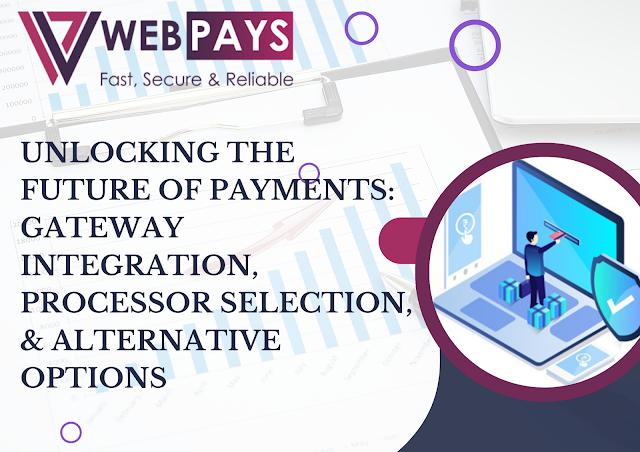Unlocking the Future of Payments: Gateway Integration, Processor Selection, & Alternative Options


Embedded payments refer to the integration of payment
processing capabilities directly into a platform or application, allowing users
to make payments seamlessly without leaving the platform. It involves incorporating
payment functionality into the user interface and workflow of an application or
website. The payment method eliminates the need for users to be redirected to a
separate payment gateway or service. This blog post explores how embedded
payments provide a safe passage for software platforms to offer payments while
mitigating potential risks.
Embedded payments are designed to enhance the user
experience by streamlining the payment process and reducing friction. Instead
of requiring users to navigate to a separate payment portal, they can complete
their transactions within the platform. This can be particularly useful for recurring
payments, such as e-commerce platforms, casinos, subscription services, or on-demand
marketplaces. The high-risk merchant
account holders have
specific benefits of using embedded payments. They use expensive software and
thus the payment platforms should be extremely safe and predictably.
By embedding payment capabilities, the platforms can provide
a more cohesive and efficient user experience. It simplifies the checkout
process, reduces cart abandonment rates, and improves conversion rates.
Additionally, embedded payments enable platforms to have more control over the
payment experience, including branding, customization and security.
Embedded payments can be implemented through various means,
such as using payment APIs provided by
payment processors or integrating with third-party payment service providers.
The specifics of the implementation depend on the platform, its infrastructure,
and the chosen payment solution.
Overall, embedded payments enable platforms to seamlessly
integrate payment functionality, enhance user experience, and simplify the
payment process.
In today's digital economy, software platforms are expanding
their offerings to include embedded payments. It allows users of businesses
with an offshore merchant
account to make transactions seamlessly within the platform itself.
This integration of payment functionality into software platforms provides
numerous benefits. It includes enhanced user experience, increased customer
retention, and improved revenue streams. However, enabling payments within
software platforms requires careful consideration of security measures. Also,
regulatory compliance to ensure a safe and reliable payment ecosystem is also
necessary.
Enhanced User
Experience
Embedded payments revolutionize the way users transact
within software platforms by eliminating the need for third-party payment
gateways or redirecting users to external websites. By integrating payment
capabilities directly into the platform's interface, users can enjoy seamless
transactions without leaving the platform. For example the high risk poker merchant account holders ensure
convenient frictionless payments for their players. The streamlined process of
embedded payment increases user satisfaction and encourages higher engagement
levels, ultimately leading to improved customer retention.
Increased Security
Measures
Security is a paramount concern when it comes to processing
payments within software platforms. To provide a safe passage for embedded
payments, platforms must implement robust security measures. These measures
include end-to-end encryption, secure data storage, tokenization, and adherence
to industry standards such as the Payment Card Industry Data Security Standard
(PCI DSS). For a Global Payment
gateway these security measures are extremely important. Then only they
can work on a payment method. Additionally, platforms should regularly conduct
security audits and vulnerability assessments to identify and address potential
threats.
Regulatory Compliance
Compliance with financial regulations is crucial for
software platforms offering embedded payments. Platforms must ensure adherence
to applicable regulations such as anti-money laundering (AML), Know Your
Customer (KYC), and data protection laws, depending on the geographical regions
they operate in. The businesses with International
Merchant Account that manage mange global locations need to follow
stringent rules. Collaborating with reputable payment service providers can
help platforms navigate these complex regulatory landscapes and stay updated
with changing requirements.
Fraud Prevention
The integration of embedded payments brings the risk of
potential fraud. Software platforms must implement robust fraud prevention
measures to protect both themselves and their users. This includes employing
advanced fraud detection systems that analyze transactional data, monitor user
behavior, to identify suspicious activities. Additionally, implementing
two-factor authentication, device fingerprinting, and transaction verification
mechanisms adds an extra layer of security.
Trust and Reliability
By offering embedded payments, software platforms can
enhance trust and reliability among their user base. Users feel more secure
when making payments within a familiar platform, reducing concerns about data
privacy and potential scams. Trust is further reinforced when platforms
collaborate with reputable payment processors that have established track
records in the industry.
Revenue Generation
Embedded payments provide software platforms with a new
revenue stream. By facilitating transactions within their ecosystem, platforms
can charge transaction fees or take a percentage cut from each payment. This
additional revenue can contribute to the platform's growth, allowing for
further innovation, development, and improvement of services.
Embedded payments offer a safe passage for software
platforms to expand their services and provide a seamless payment experience.
They prioritize enhanced user experience, implement stringent security measures,
ensure regulatory compliance, prevent fraud, and build trust and reliability.
Through these features software platforms can successfully navigate the
complexities of embedded payments. However, it is essential for platforms to
remain vigilant and adapt to evolving security threats and regulatory
requirements. It helps maintain a secure and trustworthy payment ecosystem.
With the right strategies and partnerships in place, software platforms can use
embedded payments to drive growth in the digital economy.
Comments
Post a Comment